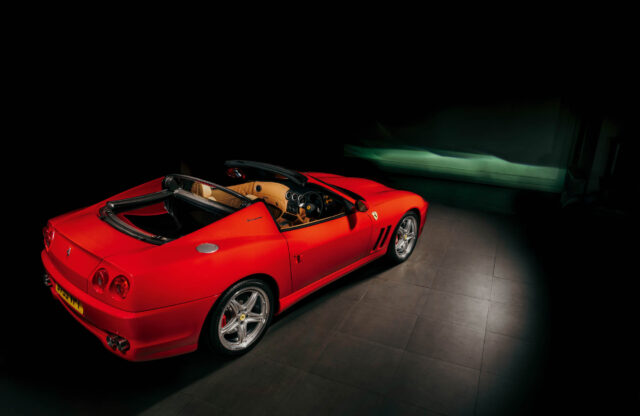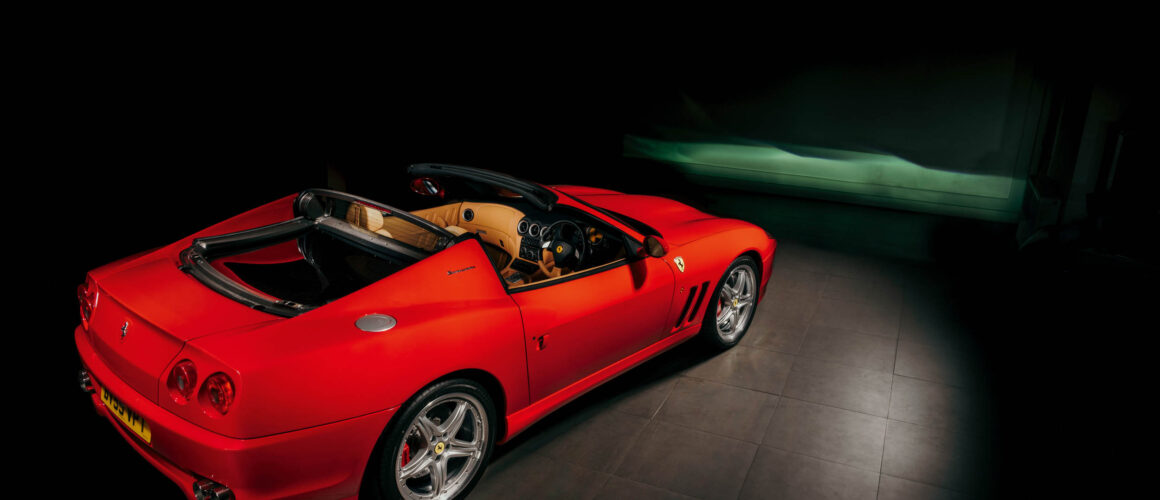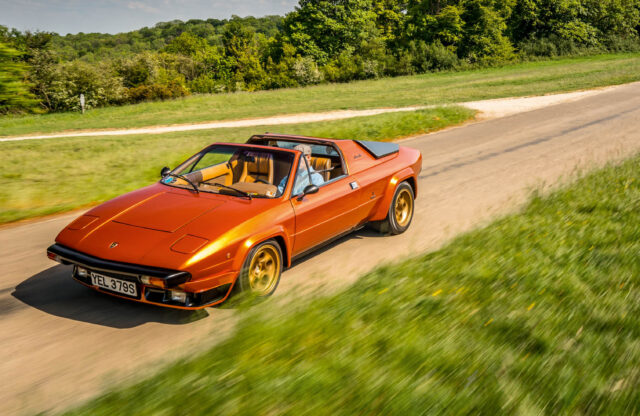The Ferrari 575M was a watershed modern-era Ferrari. But the the Superamerica really opened it up
Ten seconds is all it takes, but watching the Ferrari 575 Superamerica flip its top is incredible. I know, this is a thoroughbred supercar, I should be talking about 0-60mph times or top speed – but there’s no doubt that watching the carbonfibre-framed, Saint Gobain-glazed roof flip backwards through 180º is this car’s real party piece. It shouldn’t come as a surprise, though, as the Revocromico mechanism was created and patented by the father of the Daytona and 288 GTO, one Leonardo Fioravanti.
Fioravanti set up his own design house in 1991 after parting ways with Fiat, where he had ended up as director of design after decades at Pininfarina. After several interesting designs and concepts, the first incarnation of the roof appeared in 2001 on Fioravanti’s vision of a 21st Century Alfa Romeo sports car, called the Vola. Aside from a handful of concepts, and the Superamerica in 2005, the patented roof mechanism would notably go on to appear under licence on the back of Renault’s shortlived Wind two-seater…
In the Ferrari’s case, Fioravanti’s roof provided a clever solution to a traditionally tricky problem. The limited-production Superamerica was the follow-up to the rather compromised 550 Barchetta. Pininfarina had, in effect, chopped the roof off the 550 Maranello, creating a thing of beauty to celebrate the 70th anniversary of the coachbuilder in 2000. There was certainly an appetite for the car, but the roof – or lack of one – caused issues for those in colder, wetter climates. It was designed to be driven with no roof but, if you ran with the supplied ‘canopy’, the car couldn’t be taken above 70mph. It was glorious, but Ferrari customers weren’t willing to put up with that kind of compromise.

Five years later, Ferrari launched the 575M-based Superamerica, seeking to make its flagship limited-run V12 convertible better than its predecessor in every way. At a time when most mainstream manufacturers were fitting their convertible models with complicated and hefty folding metal roofs, the Fioravanti solution added just 60kg to the weight of a standard 575M, and that included considerable chassis bracing. While the rear buttresses helped to improve rigidity, the Superamerica required sill stiffening, a reinforced central tunnel and A-posts, and extra strengthening around the transaxle mountings.
The more you look at it, the more you notice how different the rear of the Superamerica is. Sturdy buttresses encapsulate the roof mechanism, and ever-so-slightly fuller hips give it an even more hot-rod stance than the coupé. The boot-lid is bespoke and formed from carbonfibre, with the prancing horse standing proud thanks to a raised shield made as part of the finished panel. The front is far more obviously related to the 575M, although some additional jewellery in the headlights and an aluminium mesh within the air intake elevate the Superamerica. A gorgeous set of 19-inch BBS split-rims completes the package.
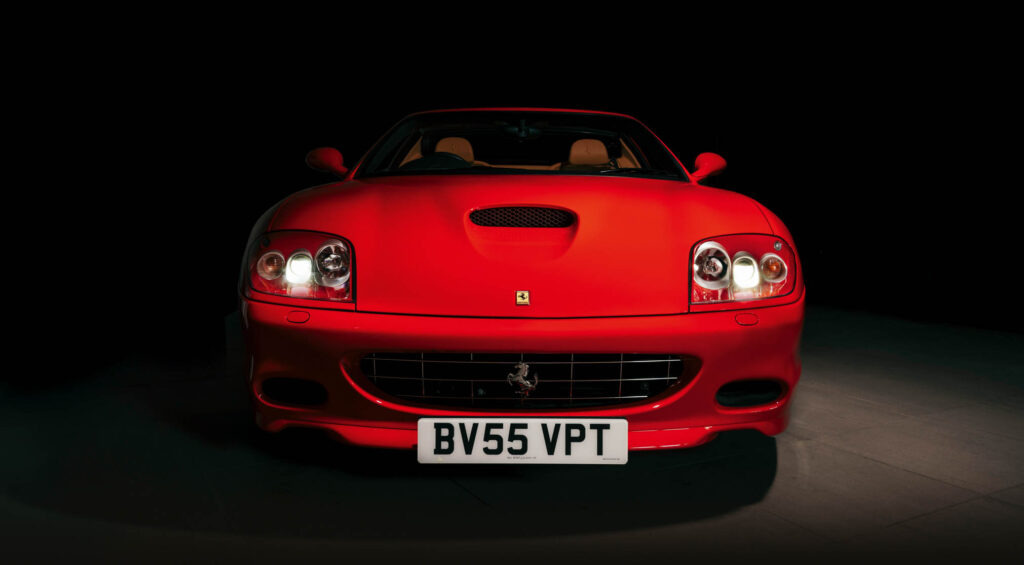
To counter the moderate weight gain, Ferrari then tweaked the 575’s already healthy 5.7-litre, dry-sump V12 with high-flow intakes and a less restrictive exhaust. This liberated an extra 25bhp, pushing output to 533bhp. Performance was certainly not lacking. Ferrari claimed 0-60mph in 4.3 seconds, but more impressively a 199mph top speed.
Back to that roof. When it’s open, the rear screen – now reversed – acts as a wind deflector to keep buffeting down. Unlike traditional convertible tops, the boot space is unimpeded and can be accessed when the roof is retracted. When you’re sitting inside, the glazed panel reveals yet another trick. A switch in the centre console allows the almost-one-square-metre of glass to be tinted to five levels. This panel was an industry first, developed by Saint Gobain, which achieved the result by using a sheet of electrochromic film sandwiched between two layers of glass. Passing a small electrical current through the film changes its opacity from a standard 40% tint to almost entirely blacked out in just 60 seconds.
Almost 20 years on, however, that same roof can cause some serious headaches. Peter Smith of Bell Sport & Classic, who has dealt with a number of Superamericas – including the stunning example in these photographs – explains: ‘It’s actually quite a fragile roof, in terms of the way it operates and in that the glass has a tendency to delaminate over time. You get water ingress between the two panes, so you’ve got to look carefully at that. We went through a phase when you could not get a replacement roof. You can get them now, but they’re hugely expensive. With the glass, you’ve got to look with caution at the operation of the rheostat for dimming as well.’
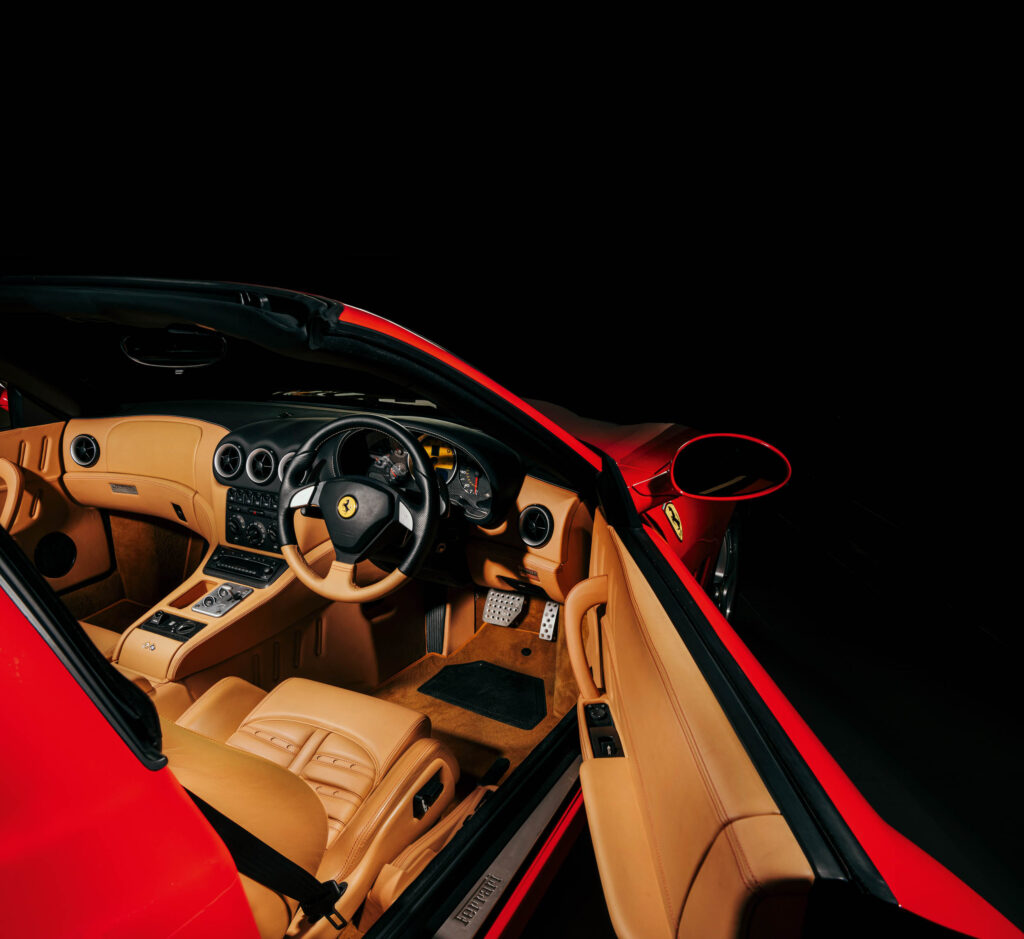
As a limited-production model, the interior was given a number of upgrades. The instrument cluster was brightened with a yellow or red rev-counter, which was surrounded by carbonfibre trim. Carbon was also used to surround the Superamerica’s roof control switches and radio, and the 575’s hugely desirable Daytona-style perforated leather seats were standard.
Just how limited was ‘limited production’ in 2005? Ferrari claimed that it would build 559 Superamericas, which were all spoken for at launch. Of these, a great number would have been bought by collectors, as Peter explains: ‘Because they were limited-edition cars at the time, the owners tended to be collectors and owners of other Ferraris, which means that you don’t often find a high-mileage car. We had a 20,000-mile car in last year, which was among the highest I’ve seen.’
He continues: ‘Is the paint original? How about the wheels and tyres? One of the problems with such a super-low mileage car is that it may be on its original set of tyres. With the car being at least 15 years old, it’s not really safe. So what looked at face value to be OK actually needs fully recommissioning. You have to change all the fluids and a lot of the perishable items.’
Service history becomes highly relevant, despite cars such as this being relatively young. ‘Some have large gaps in the history because they’ve been in a storage facility,’ says Peter. ‘You’ve got to dig a little deeper, and understand why a gap of four or five years between services is justifiable. When you start looking at things like the MoT history and identify that during the four or five years it hasn’t been serviced it’s actually covered thousands of miles, that is not storage. I’ll say it again, history and provenance are everything!’

When new, the basic price officially started at £191,000, although the F1 paddleshift gearbox was a £7800 option – and was specified by the vast majority of buyers. Opting for a regular gated manual was almost frowned upon at the time, which is why (just like the regular 575M coupé and the later 612 Scaglietti) the few special-order manual cars that got out into the wild are highly prized today. Approximately 40% of all Superamericas were also specified with the optional HGTE package, which added a further £14,455 onto the price – pushing it well beyond the £200,000 mark. Most of this cost was down to the addition of the mighty carbon-ceramic brake system, plus a sports exhaust and a considerably sharper chassis set-up. Peter comments: ‘The HGTC package was certainly the key option, but I wouldn’t say it’s a make or break for the car today. It’s nice to have, though.’
Unlike the 550 and 575M, the Superamerica has never been a cheap car. Even so, as with everything wearing a Ferrari badge, prices have increased over the past decade. Peter confirms: ‘They’re way ahead of where they were ten years ago, though the market has been fairly static in the past three or four years. You’d expect a Superamerica to be anywhere from £250,000 to £325,000 today, depending on the exact mileage.’ Although manuals almost never appear on the market in the UK, in 2021 Bonhams sold a relatively high-mileage car in Europe with circa 20,000km for €529,000. An 8000-mile car in the US sold for an even more astounding $786,000 with RM Sotheby’s in Monterey.
While Ferrari’s nomenclature often seems random, it’s certainly no stranger to revisiting legendary names of the past for its modern-day supercars. This roadster’s awesome performance, style and cruising appeal meant that its credentials as a worthy Superamerica were never in question. And during its transition into classic territory, the combination of old-school Ferrari style, limited production and – of course – that quirky roof have ensured that it’s really flourished. For pure driving thrills, the cheaper 575M makes far more sense but, as heart-over-head experiences go, the Superamerica is hard to beat. When you see that roof fold for the first time, and hear the mighty V12 erupt into life, you’ll understand.
2005 Ferrari 575 Superamerica specifications
Engine 5748cc 48-valve V12, DOHC per bank, electronic fuel injection and management
Power 533bhp @ 7250rpm
Torque 434lb ft @ 5250rpm
Transmission Six-speed semi-automatic, rear-wheel drive, limited-slip differential
Suspension Front and rear: unequal-length double wishbones, coil springs, electronically adaptive
telescopic dampers, anti-roll bar
Steering Rack and pinion, hydraulically assisted
Brakes Vented discs
Weight 1790kg
0-60mph 4.2sec
Top speed 199mph
Thanks to Bell Sport & Classic
